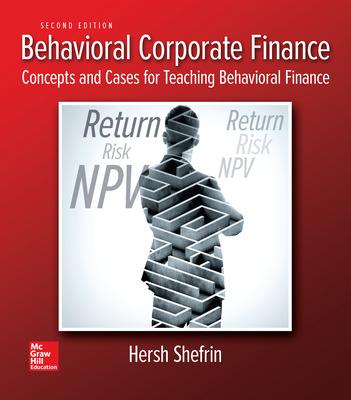1. Of the 10 psychological phenomena introduced in Chapter 1, identify which ones apply to the minicase,...
Question:
1. Of the 10 psychological phenomena introduced in Chapter 1, identify which ones apply to the minicase, and give reasons to support your answer.
2. The Times article notes that three days after the ACP awarded a $158 million contract to the Spanish firm that manufactures the tugboats, the son of the canal administrator joined the law firm representing the tugboat manufacturer. Discuss whether such a relationship presents any potential conflicts of interest.
3. The U.S. Army Corps of Engineers maintains locks and dams on U.S. waterways, and engages consultants to analyze the kinds of issues described in the minicase. One of these consultants points out that even if it is below standard, concrete might last a hundred years because it continues to gain compressive strength and generally the concrete is not heavily loaded.28 He also notes that the problem with locks and dams on such canals is not so much the concrete, but the steel gates that open and close once or twice an hour over the course of decades. The associated changes from tension to compression tend to create long-term problems, an issue which surfaced at the locks in Sault Ste. Marie, Michigan and posed a major threat to the U.S. economy. 29 In this respect, lock gates can become serious maintenance problems, and can take several months to repair or replace. In mentioning lock gates, the Times article points out that the gates in the original canal weigh several hundred tons and are finely balanced, but mentions little more than this. Discuss whether, by saying only what it did about the locks and nothing more, the Times article reflects any of the psychological phenomena described in Chapter 1.
In one of the world’s greatest engineering feats, the United States built the Panama Canal. The project took 10 years and was completed in August 1914. The United States operated the waterway for the remainder of the twentieth century, but a treaty between the United States and Panama resulted in the Panama Canal Authority (ACP) assuming command of the waterway. This they did at the end of 1999. Over the course of the twentieth century, the volume of world shipping grew greatly, and with it the volume of traffic through the Panama Canal. Notably, ship sizes also grew, to the point where the largest container ships were too big to traverse the waterway. Partly out of fear that its canal would become obsolete, the ACP made the decision to build new locks that would handle the larger container ships. In 2007 they put out a request for proposal (RFP), soliciting bids for the project. The lowest bid came from a consortium called Grupo Unidos por el Canal that was led by the Spanish firm Sacyr Vallehermoso.
The consortium’s members included firms from Panama, Belgium, and Italy. Their bid, $3.1 billion, was approximately $1 billion lower than the next lowest bid. Notably, the other bidders included Bechtel, one of the most experienced engineering and construction firms in the world. In accepting the consortium’s bid in July 2009, the ACP set a goal of completing the project in time for the 100-year anniversary of the original canal. However, the consortium missed the August 2014 deadline, and the first container ship passed through the new locks in June 2016.The New York Times documented a series of problems between 2009 and 2016.26 The problems involved leaks in concrete, insufficient water to support large ships in the canal, a shift from stable locomotives for guiding ships to less stable tugboats, insufficient margin for error from a new lock design that was too narrow, the identification of earthquake faults beneath the canal, and a cost overrun whereby $3.1 billion rose to $5.25 billion. Below is a capsule summary of the main points in coverage by the Times. The locks are made from concrete and reinforcing steel bars, and the consortium chose low-quality ingredients for the concrete. According to a 2010 confidential analysis from the firm Hill International, which was commissioned by the consortium’s insurer, the consortium’s budget for concrete was 71 percent smaller than that of the next lowest bidder. Moreover, the raw material for concrete, known as aggregate, was excavated from the Pacific side of the canal, and generally regarded as being of questionable quality for making concrete. It was for that reason that Bechtel, in preparing its bid, had planned to import aggregate.
During the testing phase in 2015, cracks emerged in the concrete lining the lock walls, and water rushed through the cracks, requiring the insertion of additional steel reinforcing bars. The Times quoted one concrete expert who monitored the situation for his criticism of the as trial-and-error, the ACP described itself....
Step by Step Answer:

Behavioral Corporate Finance Concepts And Cases For Teaching Behavioral Finance
ISBN: 9781259277207
2nd Edition
Authors: Hersh Shefrin





